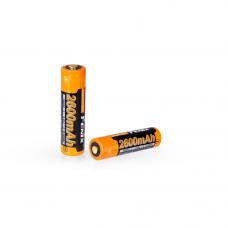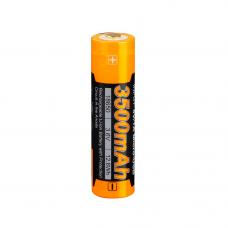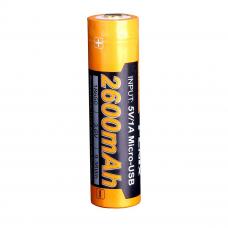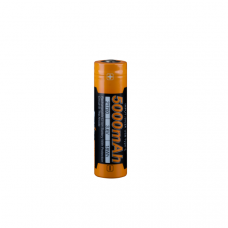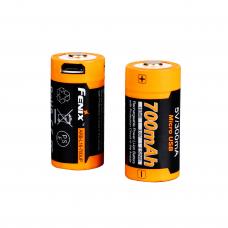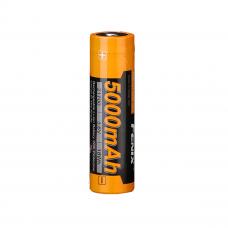A flashlight is an important part of tactical gear for both tourists and military personnel. Lighting is crucial during hikes and military operations, especially in dark hours of the day. A flashlight allows avoiding potential dangers and feeling more comfortable in extreme conditions. To ensure uninterrupted operation of any light source, it is important to have stable power. This applies to both camping and tactical models.
Practically any modern pocket, headlamp, or other portable electronic device operates on removable power sources, as mains charging devices are impractical. For models with replaceable sources, these can be batteries or rechargeable batteries. Therefore, we recommend familiarizing yourself with batteries and rechargeable batteries in more detail to avoid confusion when choosing a power source for your device.
Flashlight Batteries - Types
Batteries are the most common power source, which can be purchased at practically any store. Modern batteries are available in various form factors, allowing you to choose the most suitable option.
Currently, there are the following types:
- Alkaline. This is an outdated type, rarely encountered and mostly used in low-power devices where high capacity is not needed.
- Carbon-zinc. Currently the most popular, with high capacity and low self-discharge percentage during long-term storage.
- Lithium. The most durable batteries, similar to alkaline in capacity and self-discharge. They can work at low temperatures (up to -40°C), but their cost is high.
Rechargeable batteries for flashlights are also a popular power source, especially in flashlights from well-known brands such as Fenix and Nitecore. They are available in various sizes, such as AA, AAA, 18650, etc.
Types of flashlight batteries:
- Nickel-metal hydride (Ni-MH). Capable of retaining functionality after many recharge cycles and have low self-discharge.
- Lithium-ion. Most common, with high capacity, low self-discharge, and ability to withstand over 500 recharge cycles.
- LiFePO4. Not as popular but quite powerful, able to work even after 2000-2500 recharge cycles. They have a high cost and not all devices support them.
Considering the rechargeability of batteries, purchasing one may be more cost-effective in the long run compared to buying numerous disposable batteries. Additionally, disposing of one flashlight battery is much easier than hundreds of batteries.
The choice of a flashlight battery depends on several factors:
- Battery type. Find out which type of battery your flashlight supports.
- Voltage and size. Make sure the selected battery has the correct voltage and size.
- Capacity. Choose a battery with the appropriate capacity to meet your needs. Higher capacity means longer flashlight runtime, but it may affect the size and weight of the battery.
- Recharge cycles. Consider the number of recharge cycles the battery can undergo. This is important for determining the battery's service life.
- Temperature range. If you often use the flashlight in cold climates, choose a battery that can operate at low temperatures.
Always pay attention to the manufacturer's recommendations regarding flashlight batteries, as they may provide more specific guidance.
Where to Buy Flashlight Batteries?
You can buy flashlight batteries inexpensively at the military goods online store "PROF1GROUP". Orders can be placed on the website. Prices for products and their detailed descriptions are indicated in the catalog, so you will be able to thoroughly familiarize yourself with the assortment and choose the appropriate products for yourself. Payment for purchases can be made either when ordering or upon receipt at your discretion. If necessary, you can arrange installment payments with your bank. Delivery is carried out within a few days after placing the order by courier or to the nearest branch in your city. For additional information, contact the managers by phone or chat.





